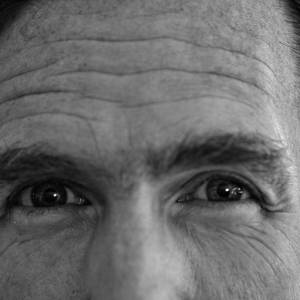Principles...
... Be damned. ;-) Which principles?
Look in large to see, I'm sure, tell-tale imperfections that might hold a clue.
On the off-chance I've done a good enough job it's concealed, I'll put the answer at the bottom.
Meanwhile, I shall regale you with a cheery tale: the saga of the Dreaded Lurgi. Since mrs tsuken and I began eating healthily, and exercising (well, she already was, but my running only began in June), we've been rather well persons. As well as Miss 6, in actual fact, and much moreso than Mstr 5, who catches anything going. Even through winter, there was nary a sniffle between us. Then, creeping like a snotty thief in the night, or perhaps a glazed donut monster, came...
...The Dreaded Lurgi. First fell young master 5. No surprise. Sacrificial lamb, pawn that he is. Or perhaps a miner's canary; if there is lurgi we get advance warning, because he will catch it even before it be fully formed. Then, rather surprisingly, fell Miss 6. She of the ox-like constitution. So, we figured, it was not merely a lurgi. 'Twas the Dreaded Lurgi.
Long be short, I can has lurgi. Mrs tsuken is feeling trepidatious, it being her birthday next week. She's contemplating moving out until afterwards, so as to avoid it. xP
Anyways...
... That principle I mentioned. I have railed often and loudly against HDR photography. The words "bilious", "clown", and "vomit" have often coagulated into a single phrase subject to emphatic utterance. This, however, was created from two bracketed exposures. In Filterstorm I applied two screen layers to the brighter exposure (because the roof and trees were still quite dark), and then added the darker exposure and painted it in with a layer mask. Add a smidgen of tone mapping and sharpening, and there it is.
Hopefully not bilious, clownish, or vomitous.
More seriously, I must allow there is HDR and HDR, and really I think it must refer to an aim, rather than to any particular process. Ansel Adams dodging and burning was essentially aiming to represent the High Dynamic Range that the eye sees; my application of screen and multiply layers, or differential curve adjustments, to different sections of a photo, is in fact HDR: me trying to show the higher dynamic range that the eye perceives, compared to the camera and the screen.
So really it only feels like I've damned my principles - because I've used multiple exposures, in a way similar to the now-ubiquitous HDR photos which so often make me squirm.
- 0
- 0
- Panasonic DMC-G10
- f/6.3
- 20mm
- 100

Comments
Sign in or get an account to comment.


